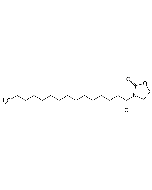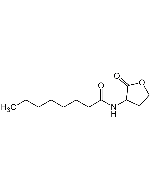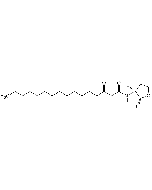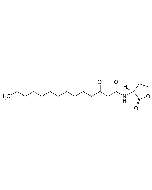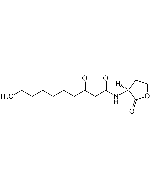Cookie Policy: This site uses cookies to improve your experience. You can find out more about our use of cookies in our Privacy Policy. By continuing to browse this site you agree to our use of cookies.
Chemodex
N-Tetradecanoyl-L-homoserine lactone
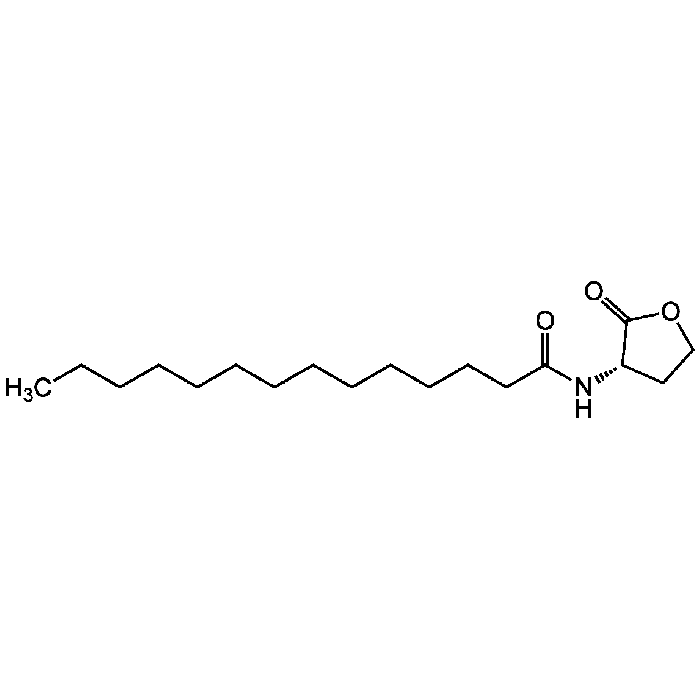
| Product Details | |
|---|---|
| Synonyms | C14-HSL; tDHL; N-[(3S)-2-Oxotetrahydro-3-furanyl]tetradecanamide; N-Myristoyl-L-homoserine lactone |
| Product Type | Chemical |
| Properties | |
| Formula | C18H33NO3 |
| MW | 311.5 |
| CAS | 202284-87-5 |
| Source/Host Chemicals | Synthetic. |
| Purity Chemicals | ≥97% (GC) |
| Appearance | White solid. |
| Solubility | Soluble in chloroform. |
| Identity | Determined by NMR. |
| Declaration | Manufactured by Chemodex. |
| Other Product Data |
Click here for Original Manufacturer Product Datasheet |
| InChi Key | ZQAYHOXXVBVXPZ-INIZCTEOSA-N |
| Smiles | CCCCCCCCCCCCCC(=O)N[C@H]1CCOC1=O |
| Shipping and Handling | |
| Shipping | AMBIENT |
| Short Term Storage | +4°C |
| Long Term Storage | -20°C |
| Handling Advice |
Keep cool and dry. Protect from light and moisture. |
| Use/Stability | Stable for at least 2 years after receipt when stored at -20°C. |
| Documents | |
| Product Specification Sheet | |
| Datasheet |
 Download PDF Download PDF |
N-Tetradecanoyl-L-homoserine lactone is a small diffusible signaling molecule and is a member of N-acyl-homoserine lactone family. N-acylhomoserine lactones (AHL) are involved in quorum sensing, controlling gene expression, and cellular metabolism. The diverse applications of this kind of molecule include regulation of virulence in general, infection prevention, and formation of biofilms. It appears later than shorter acyl chain AHLs in developing biofilms and, like other long chain AHLs, stimulates bacterial growth. C14-HSL also alters the proteolytic activity and enhances the migration of some strains of Proteus mirabilis. Induces violacein expression in a Chromobacterium violaceum mutant usually not able to produce homoserine lactones.
(1) A. Kuo, et al.; J. Bacteriol. 176, 7558 (1994) | (2) K.H. McClean, et al.; Microbiol. 143, 3703 (1997) | (3) J.K. Lithgow, et al.; Mol. Microbiol. 37, 81 (2000) | (4) J.J. Huang, et al.; Appl. Environ. Microbiol. 69, 5941 (2003) | (5) G.D. Geske; JACS 127, 12762 (2005) | (6) A. Komiya-Ito, et al.; Res. J. Microbiol. 1, 353 (2006) | (7) D. Stankowska, et al.; Microbiol. Immunol. Infect. 41, 243 (2008) | (8) T. Karlsson, et al.; J. Leuk. Biol. 91, 15 (2012)






